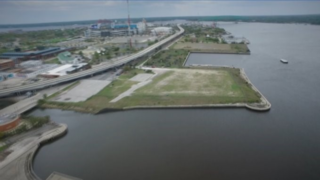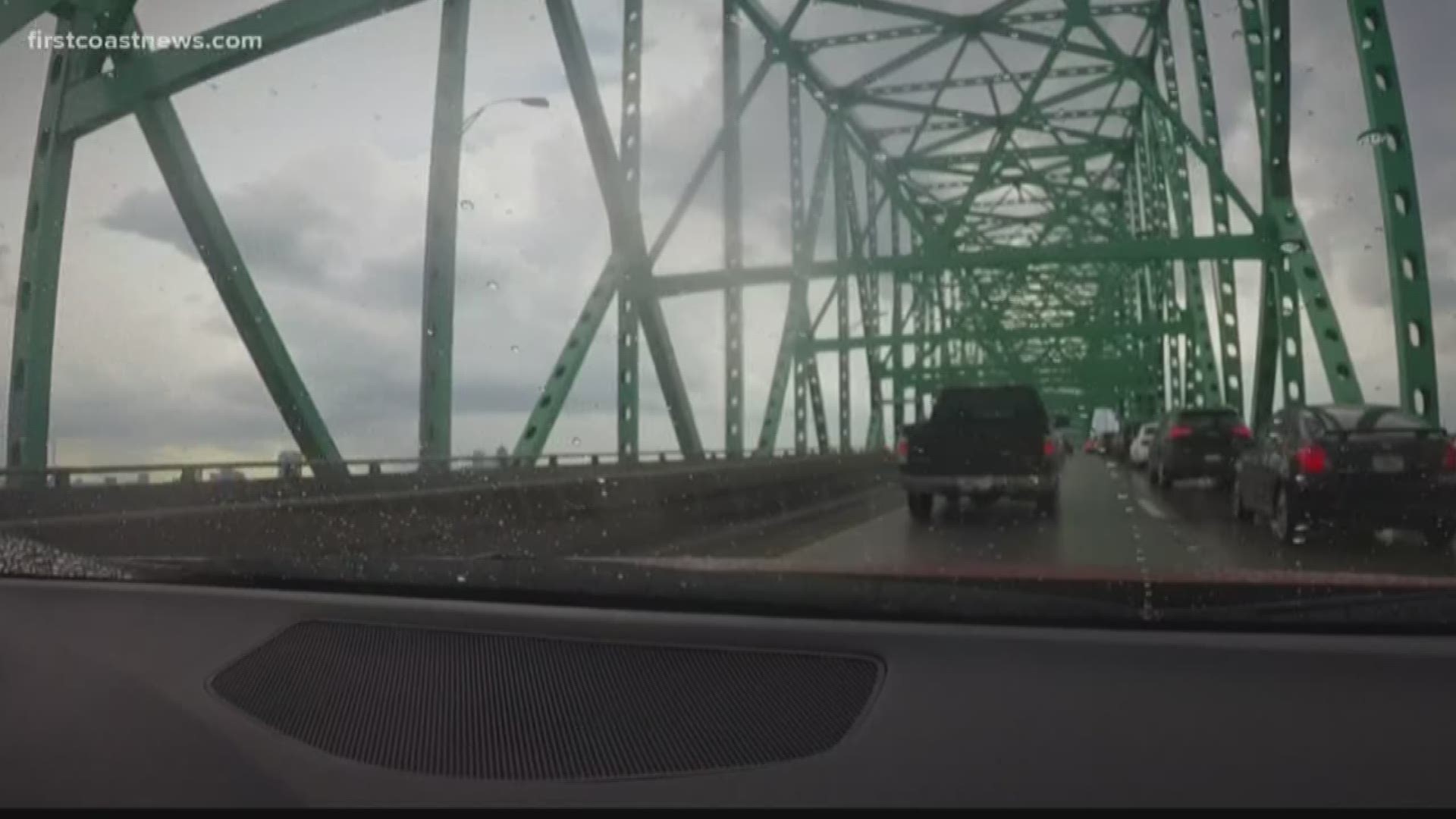Depending on who you ask, tearing down a 1.2-mile stretch of the Hart Bridge Expressway overpass will either jumpstart Downtown development or be a waste of taxpayer money.
Removing the overpass and building a new on/off ramp (near the intersection of Bay Street and Gator Bowl Boulevard) is part of a larger project designed to improve truck access to JaxPort’s Talleyrand Terminal.
The price tag: $48 million.
“A lot of cities have reconsidered that elevated freeway largely because it becomes a divider,” said professor Ruth Steiner Ph. D., of University of Florida Urban and Regional Planning.
The overpass was originally designed to help Jacksonville commuters drive over the shipyard's properties and into downtown. Now, the overpass serves as an easy way to get to and from work and exit Jacksonville Jaguars games without hitting downtown red lights.
According to a funding request application for the Talleyrand Connector proposal filed with the Florida State Senate, the project could serve as a “catalyst for revitalizing and energizing downtown Jacksonville.”
Not everyone is in favor.
“It would make my commute longer,” Jacksonville Southside resident Catherine McLeod said. “That will make [my commute] way more stressful.”
She spends 10-15 minutes commuting to and from work currently. If the overpass comes down, McLeod says she expects her commute time to double. And McLeod isn’t alone.
52,000 vehicles a day travel the Hart Bridge, according to the North Florida Transportation Planning Organization’s 2016 report. Specific numbers tied to the overpass were not mentioned.
“Right now, I am lucky, but with these changes who knows what it will be.”
In late 2016, Jacksonville Mayor Lenny Curry announced plans to remove the Hart Bridge overpass citing safety concerns.
“There are no emergency lanes. It is over 50 years old and has a 25 percent capacity used; it has lived its time,” Curry said in a previous interview with First Coast News. “As you begin to develop this area, which those are our plans, that creates additional traffic flow issues so the problem would have exacerbated if we were to not do this.”

In early 2017, The Florida Department of Transportation spent $250,000 to commission a study focused on downtown access from the Hart Bridge. According to that study, the $48 million project would come from local, state and a federal grant sources.
Per the study, “The Talleyrand Connector proposes to remove and reconfigure the existing Hart Expressway (National Highway System facility) elevated ramp from A. Philip Randolph Boulevard to Festival Park Avenue, providing:
- New freight access to the Talleyrand Port District
- Freight and vehicle congestion relief along multiple points of the Hart Expressway
- Improved connectivity to eastern downtown Jacksonville. The Talleyrand Connector is the final piece of a larger initiative to improve freight access in Northeast Florida
The City of Jacksonville and FDOT would pay for half of the project, $12.5 million each. A federal grant would fund the rest.
The FDOT study says construction is anticipated to being in January 2020 and would conclude in summer of 2020 on the Talleyrand Connector project.
A city spokesperson says in an email to First Coast News, “…The removal of the bridge and first phase of the associated components in the project can be accomplished using $25 million ($12.5M local funding/ $12.5M state funding). Later phases of the project, including timeline and funding sources, are to be determined as this project continues to move forward.”
Some of the changes to the area include:
- Remove the elevated Hart Expressway ramps
- Construct a new signalized intersection at Bay Street/Gator Bowl Boulevard
- Improve the existing signalized intersection at A. Philip Randolph Boulevard / Bay Street
- Field and include a TIAA-Widen Bay Street from 4 to 6 lanes with left turn lanes servicing raised, landscaped median
Despite the high cost for taxpayers, the project has supporters like Sen. Bill Nelson.
“The more that we can have the economic activity in the port, therefore getting trucks and goods into the port and out of the port, that is a good thing,” Nelson said. “I will always support those kinds of projects.”
But does waterfront development and fancy buildings win out over more traffic and longer commutes?
“If you’re talking about waterfront development, it is for whom?” Steiner said.
If the bridge comes down and development goes up, the Jaguars could win off the field as well.
Earlier this year, the Jaguars revealed plans for a $2.5 billion development with 4.25 million square feet near the stadium and on the riverfront land known as the Shipyards. The Jacksonville Jaguars showed renderings of the waterfront development and Lot J near TIAA Bank Field without the overpass.
The renderings appeared to show apartments, offices, hotels, a convention space and entertainment venues near the stadium.
According to the Florida Times-Union, Jaguars team president Mark Lamping told the newspaper he hopes a deal for economic development could go before the Jacksonville City Council before the end of the year.
“I’m really confident we’re going to get to a very good place that not only puts the project at a reasonable risk-reward for us but will make a lot of sense to the city as well as the taxpayers,” Lamping told the Times-Union. The goal, according to Lamping, is to get construction underway as soon as possible.
“If we can, in essence, bring a neighborhood up at the same time, it has a much better chance of being successful,” Lamping told the Times-Union. “What we don’t want to see happen is one project is done one year followed by a second one a year later and third one two or three years after that. We want to get as much going as we can at the same time.”
The Times-Union reports Lamping said starting development on the riverfront property that covers portions of Met Park and The Shipyards is contingent on what happens to elevated Hart Bridge ramp because as long as the ramp is intact, it limits the scope of what can be done on the riverfront tracts. He said Khan remains committed to bringing a five-star hotel to that area.
He said development on Lot J, which is next to TIAA Bank Field, can go forward without “100 percent certainty” on what will happen to elevated ramps. Khan is teaming up with the Cordish Companies for Lot J, which would have an entertainment venue with restaurants and gathering areas similar to what Cordish has built near sports venues in other cities.
Lamping said it is a 50-50 partnership. He said it will require support as well from the city, which will be part of the negotiations.
“There’s a reason there aren’t a lot of [construction] cranes in downtown Jacksonville,” Lamping told the Times-Union. “It’s not as if there’s an unlimited number of developers out there ready to write huge checks because there still is some risk involved.”
“This is a conflict between urban development along the waterfront and industrial development along the waterfront,” Steiner said. “Perhaps it is the expansion of residential and amenity-based economic development.”

